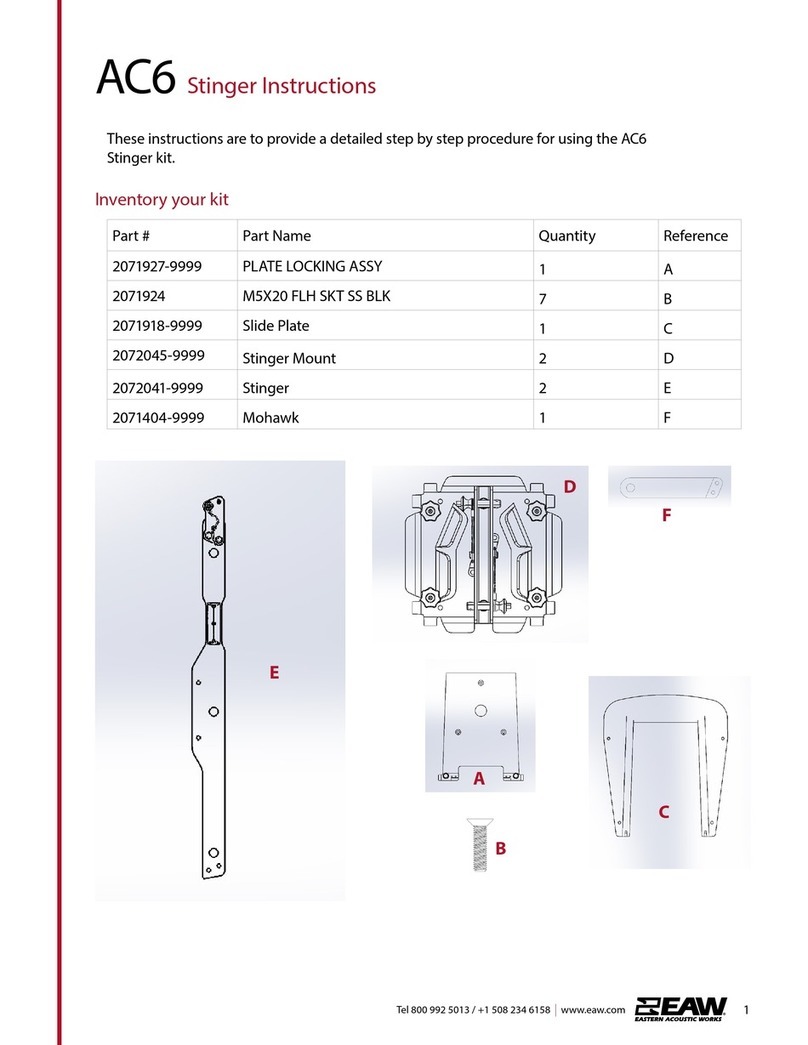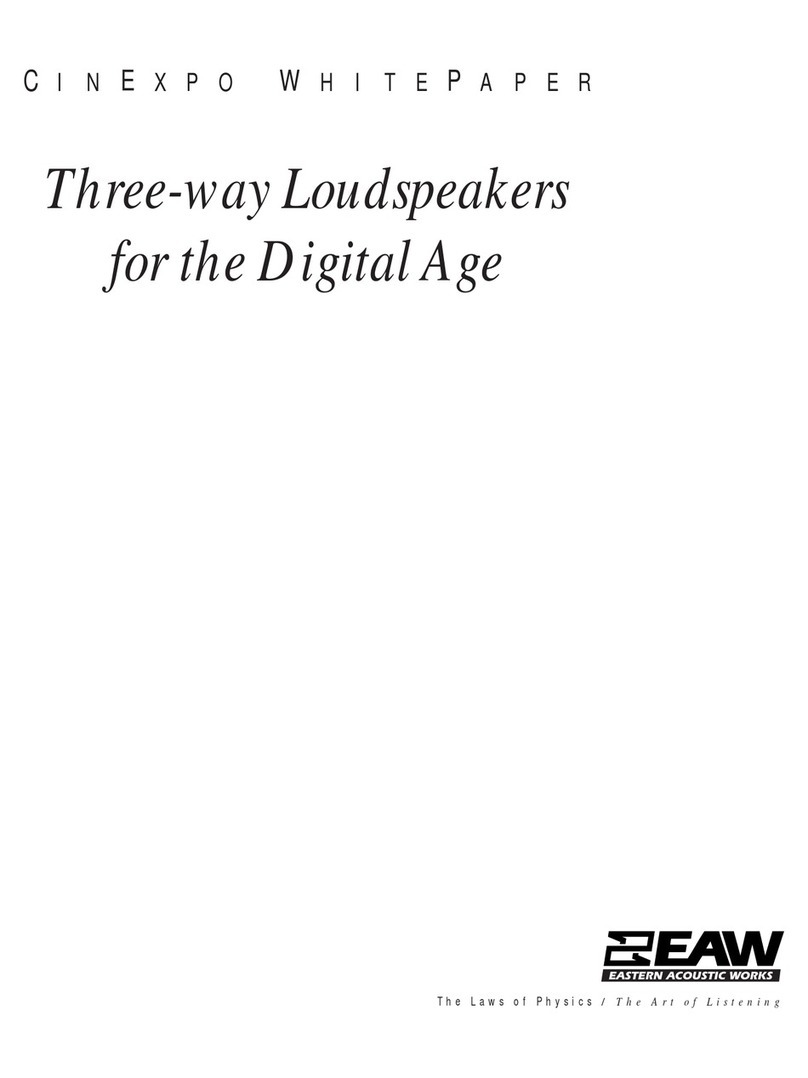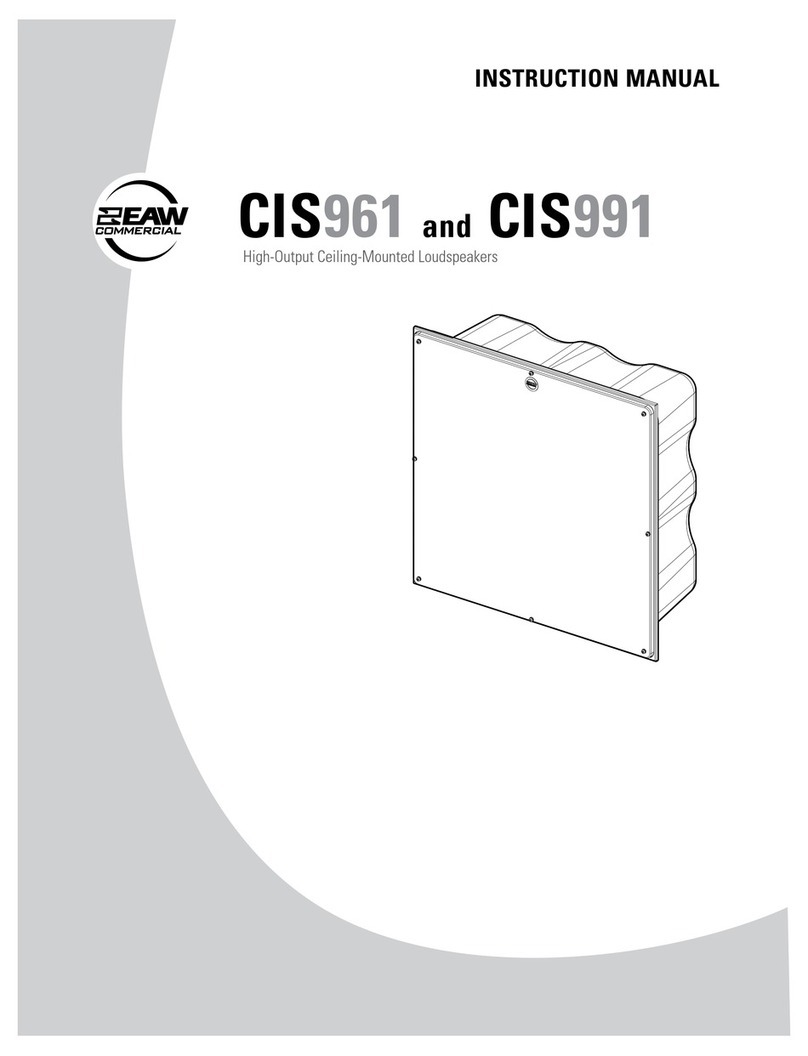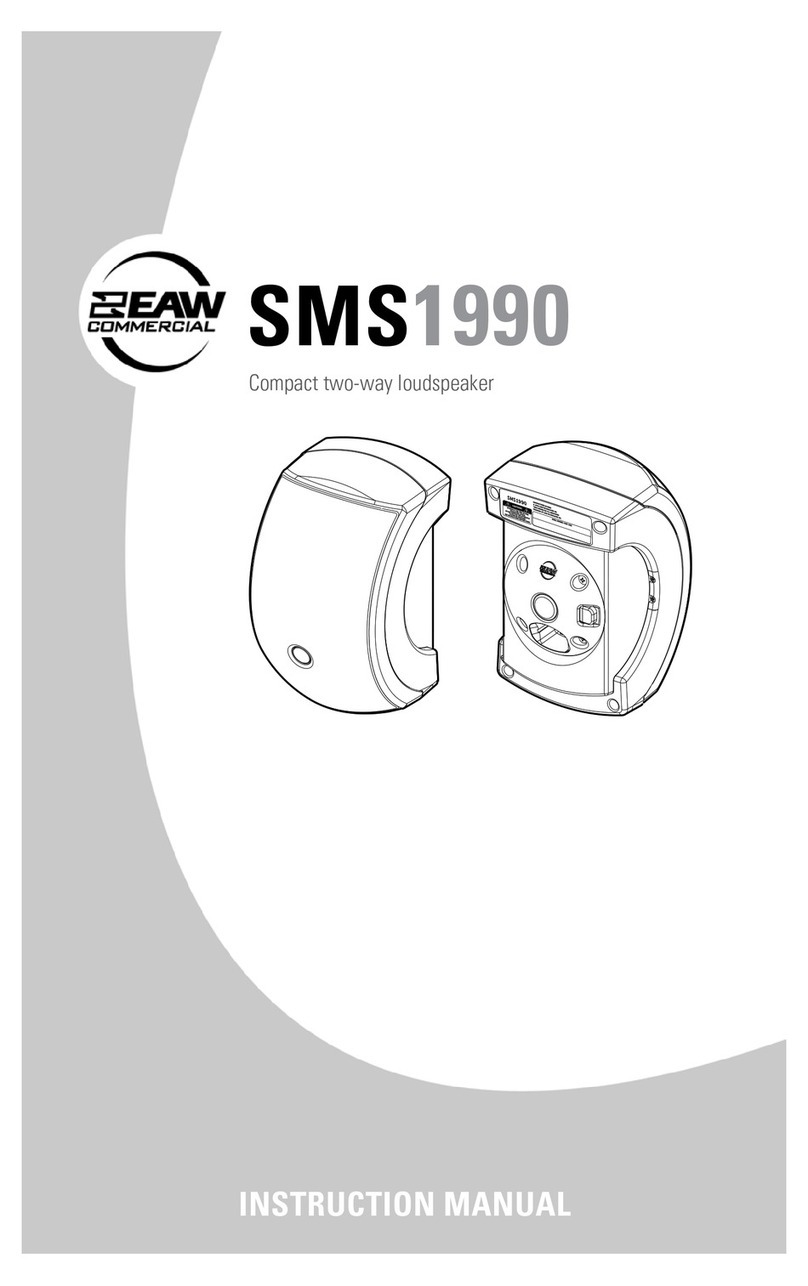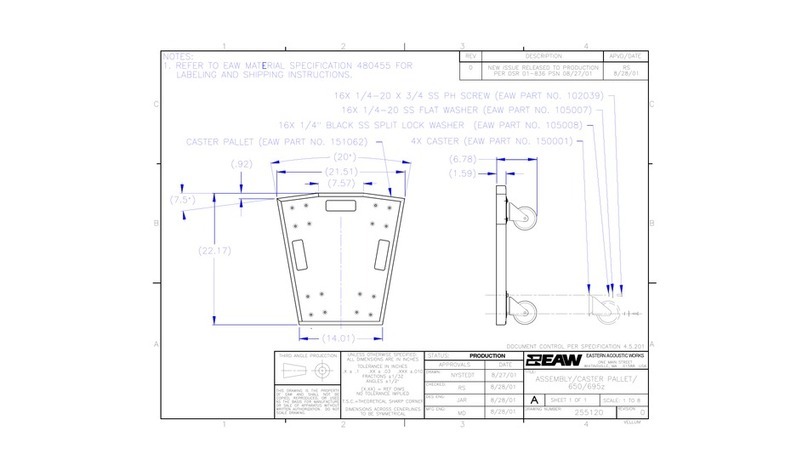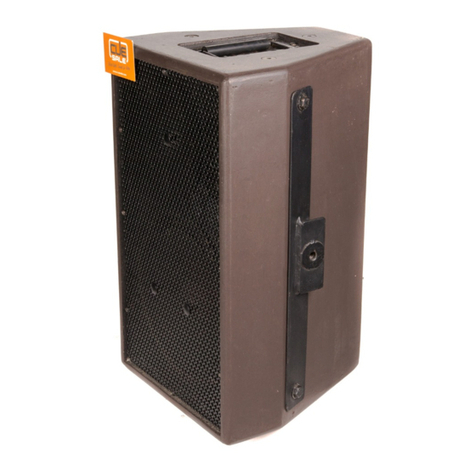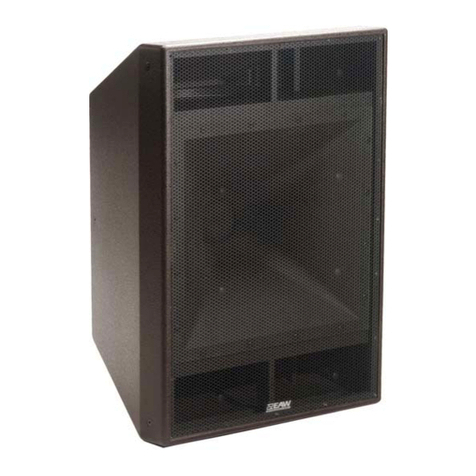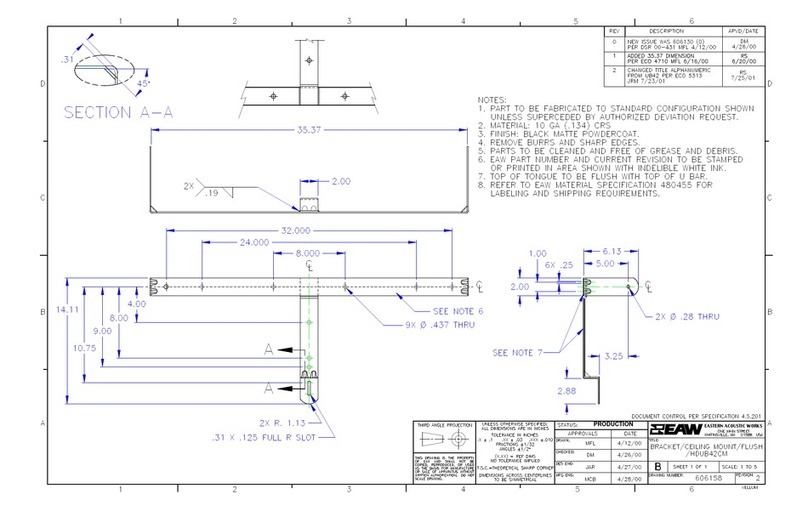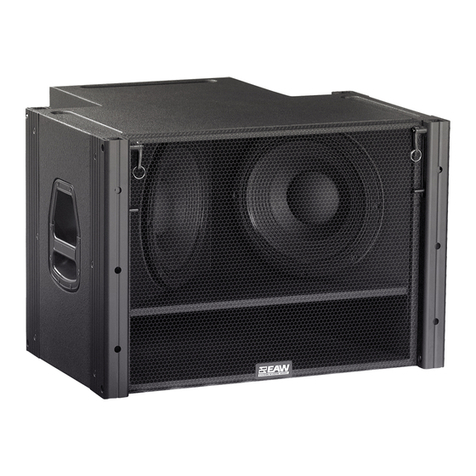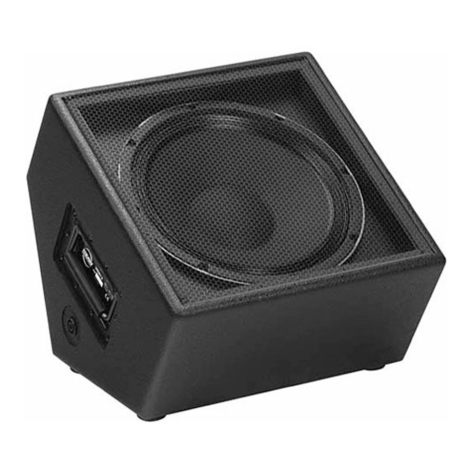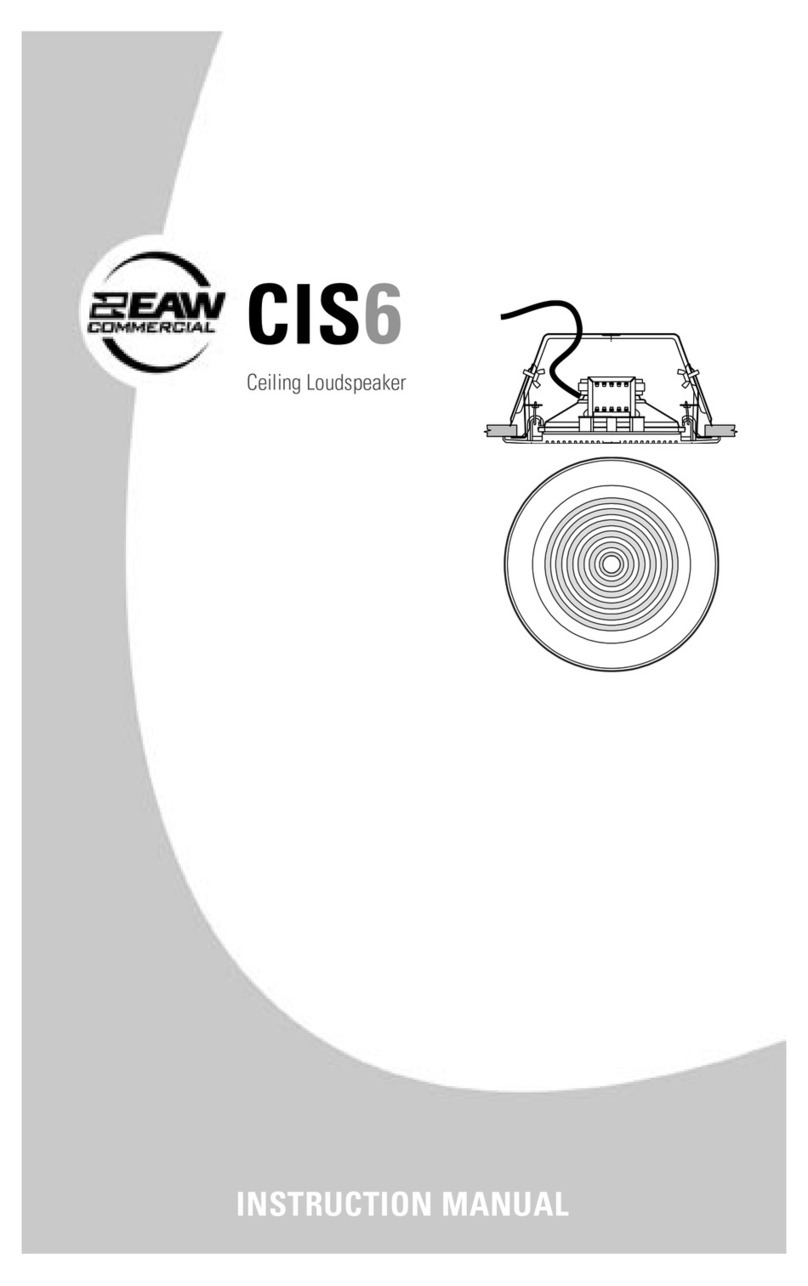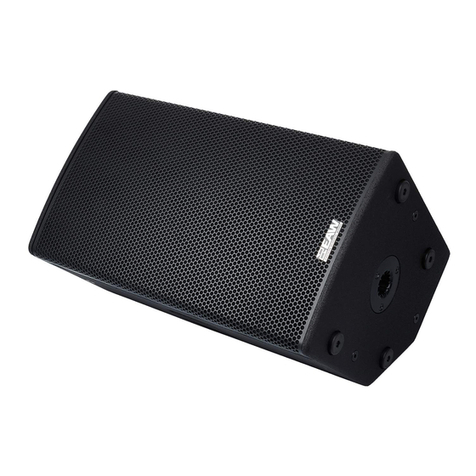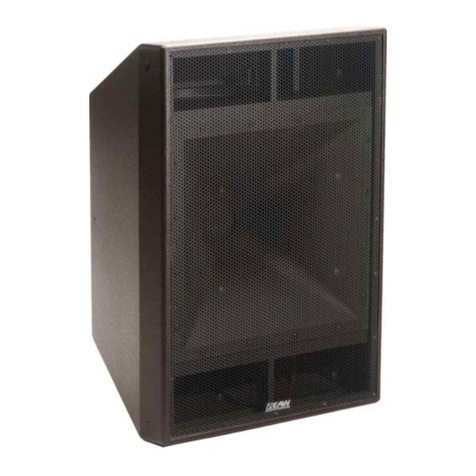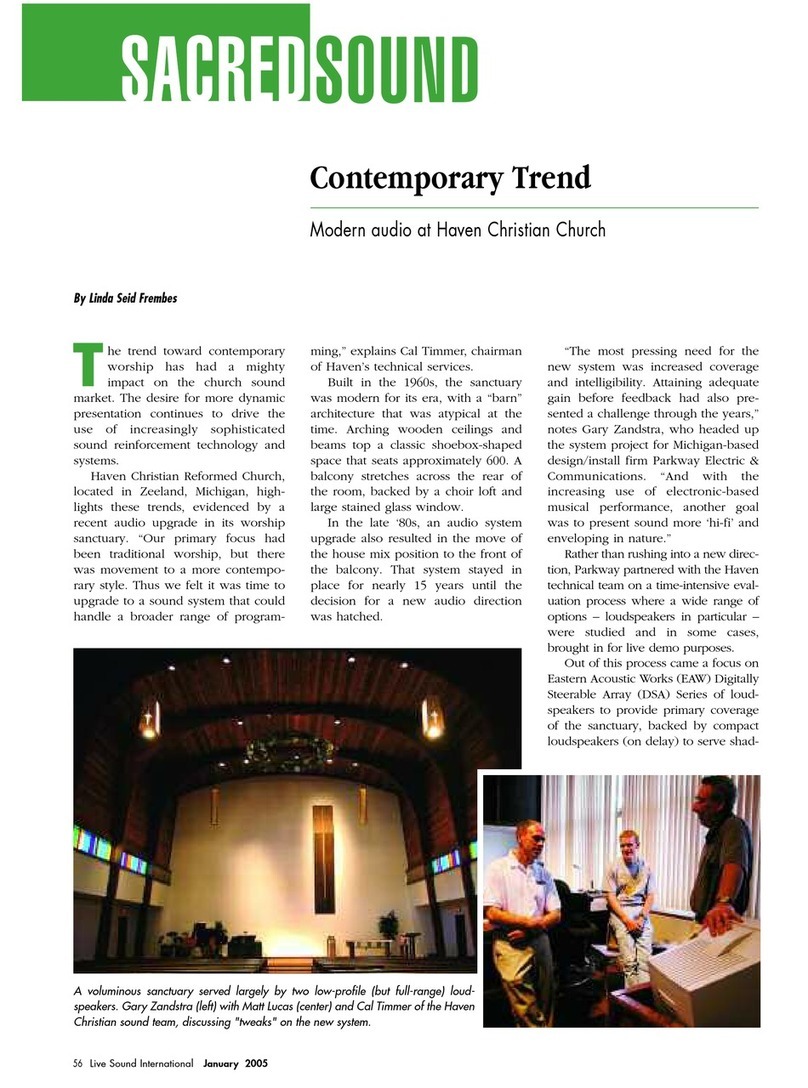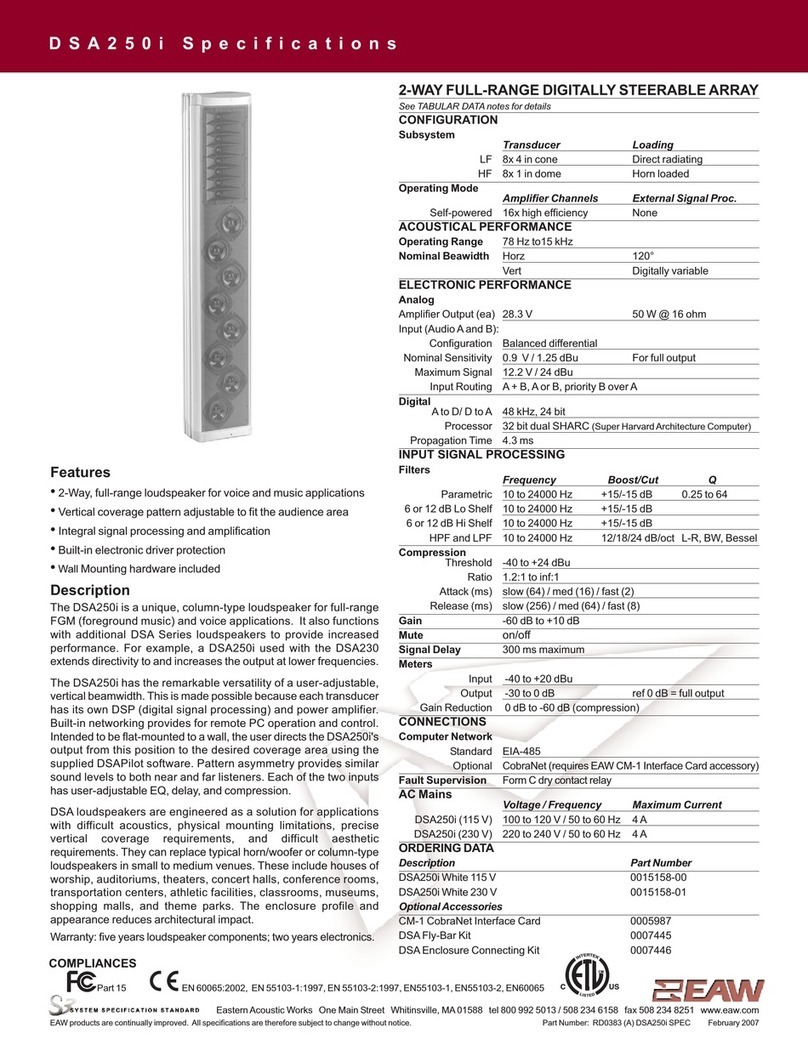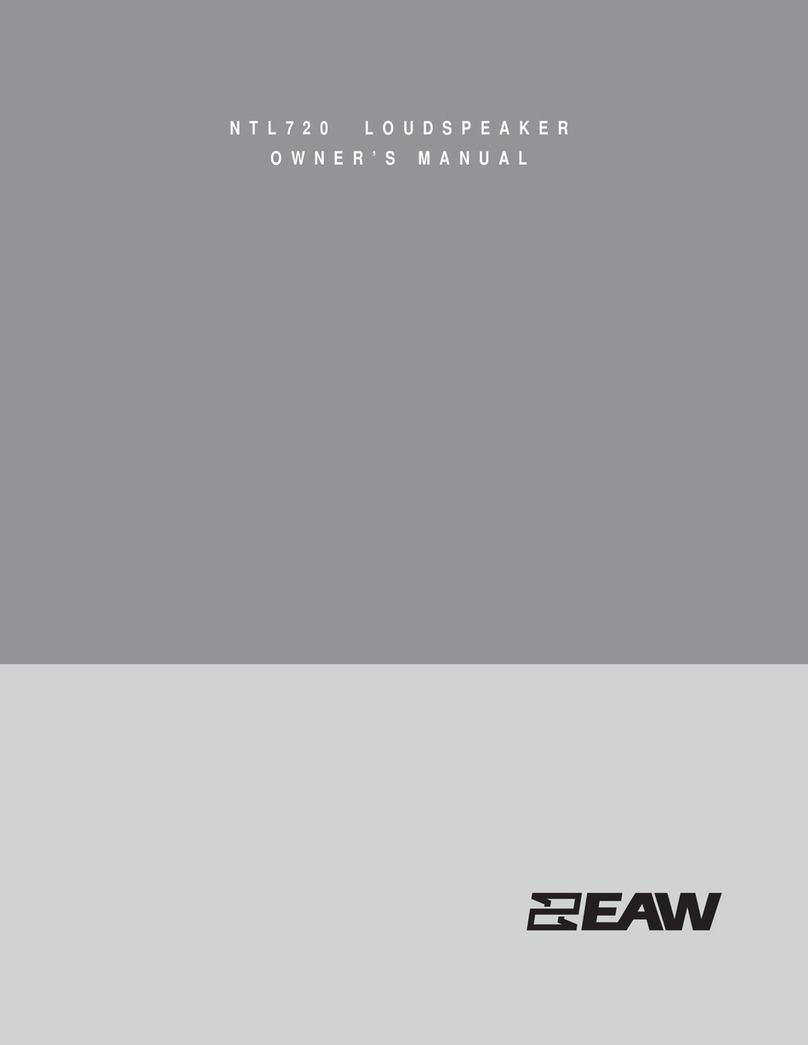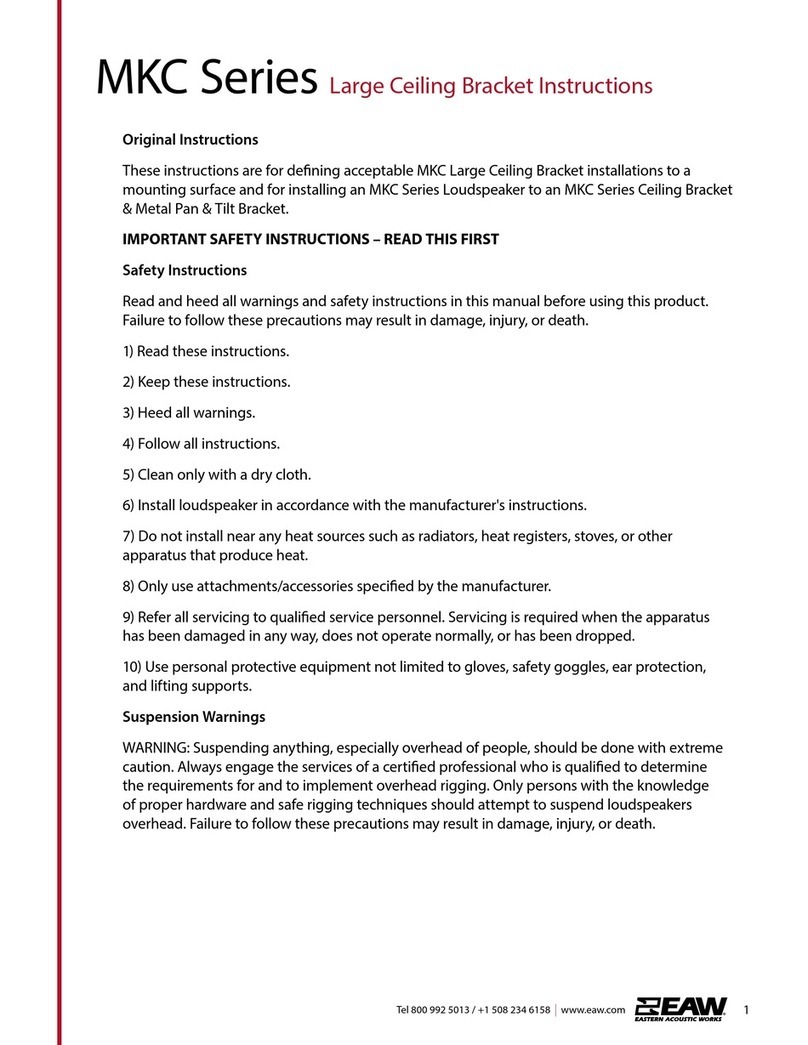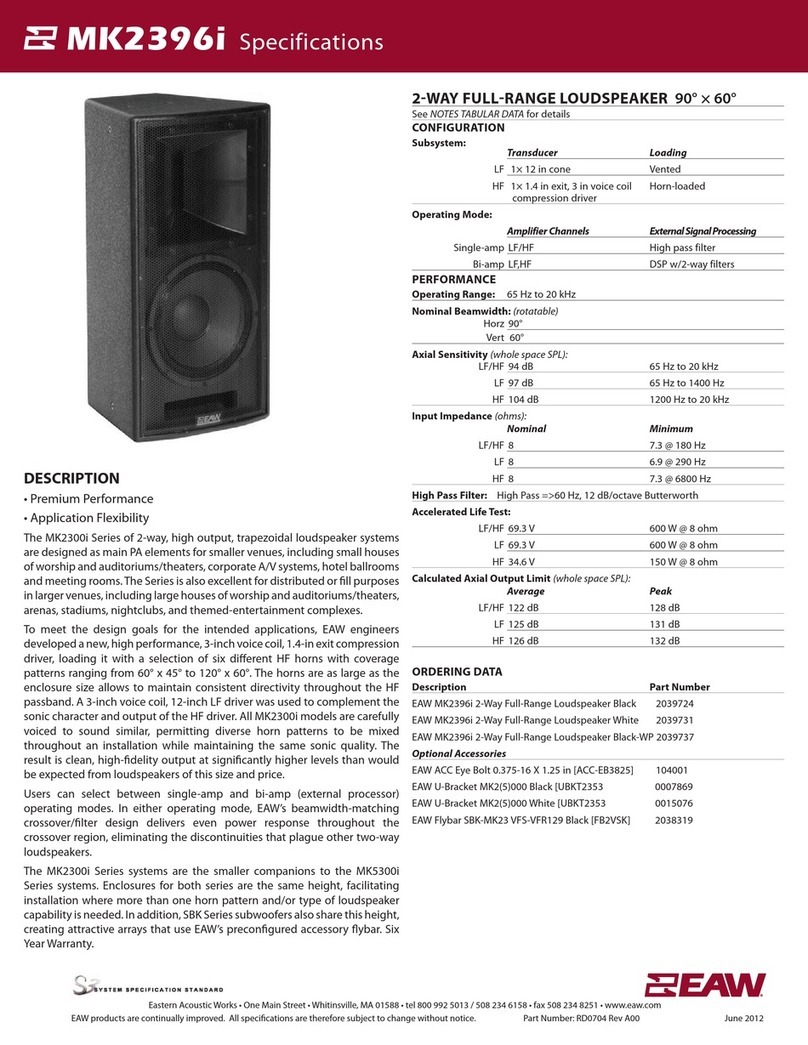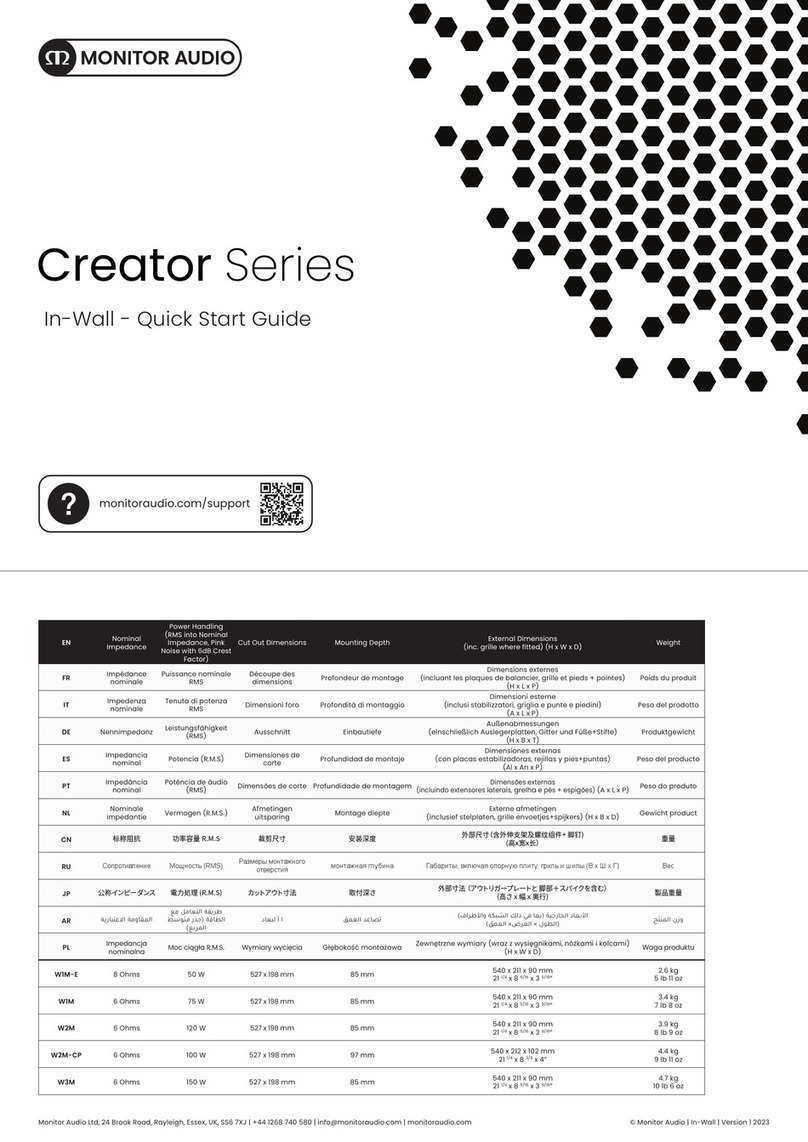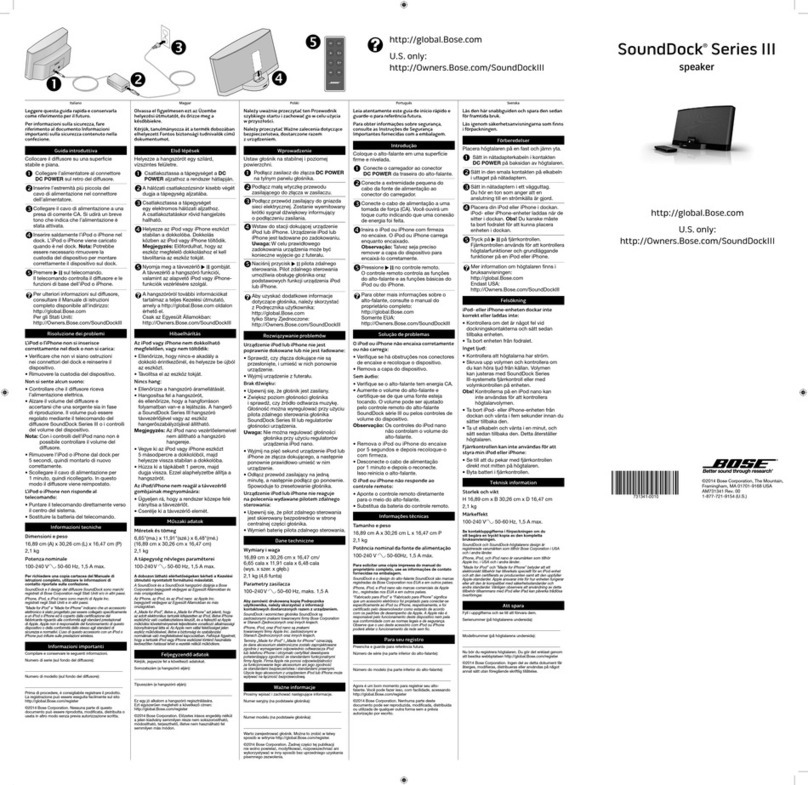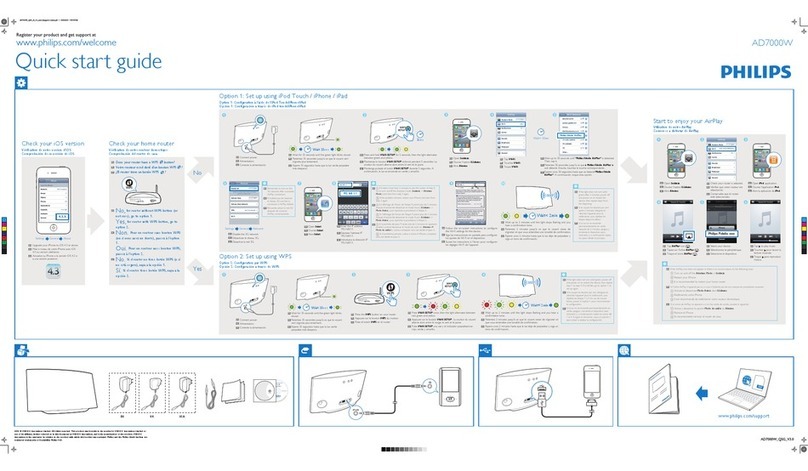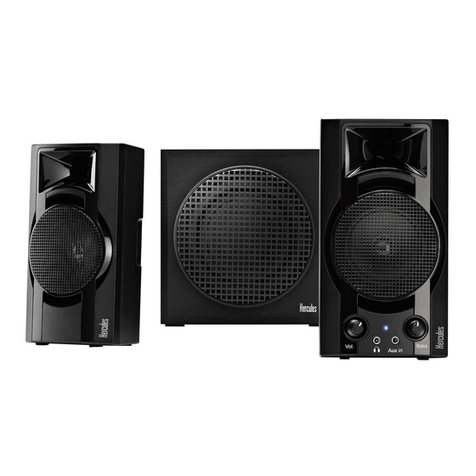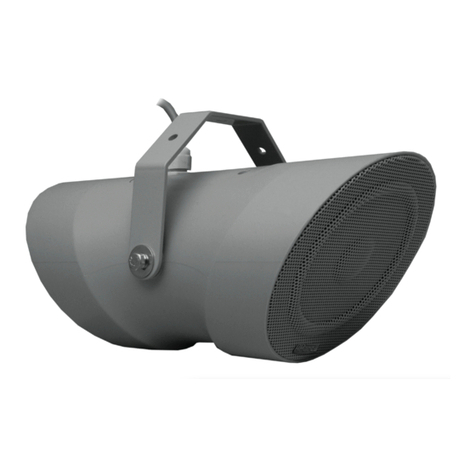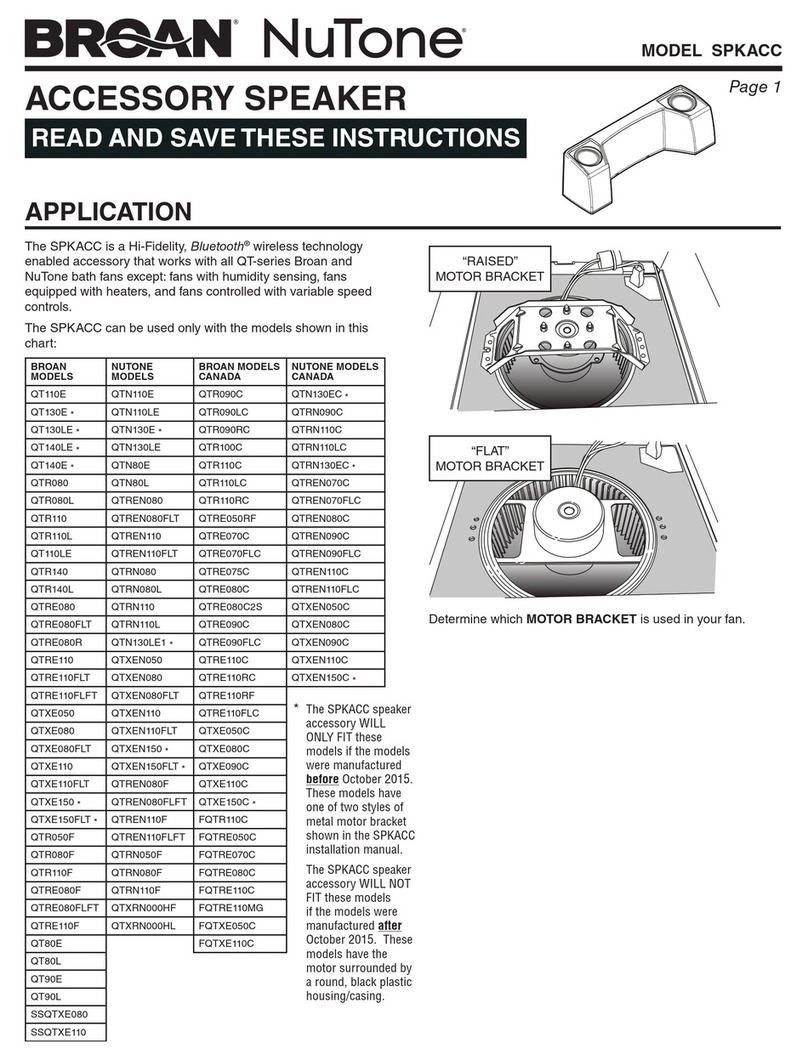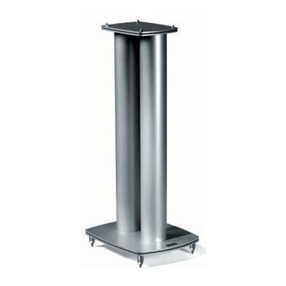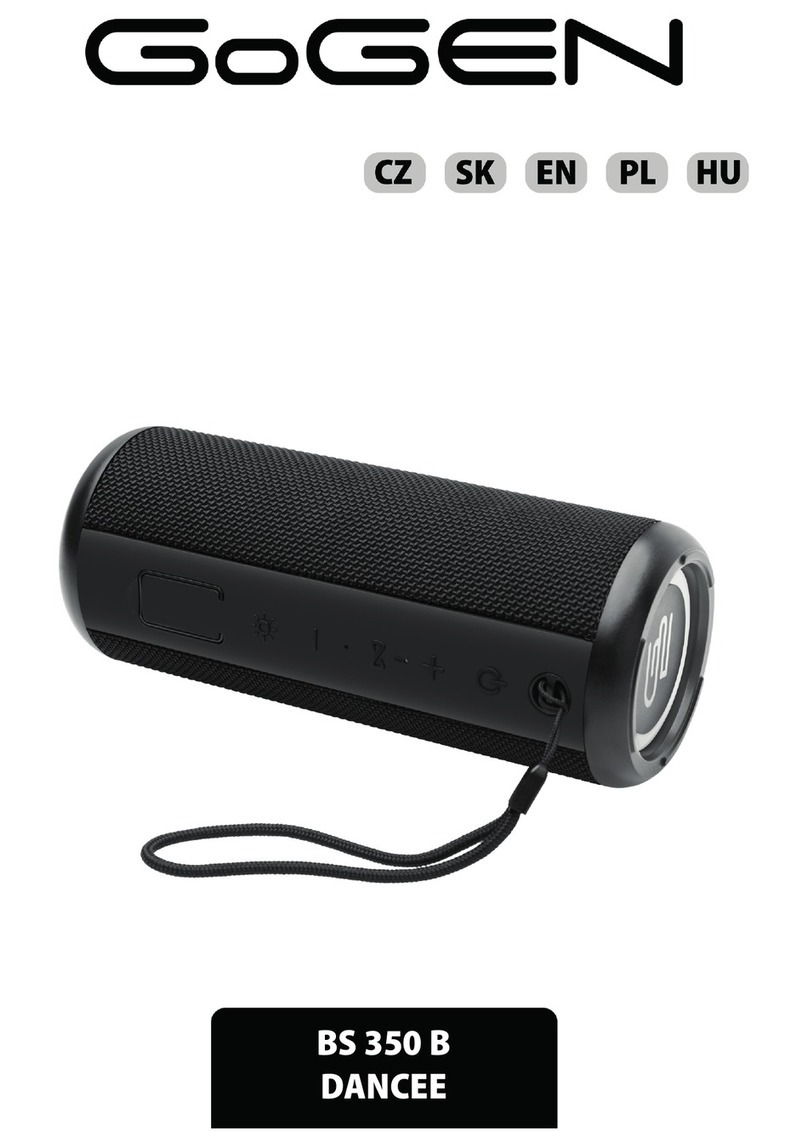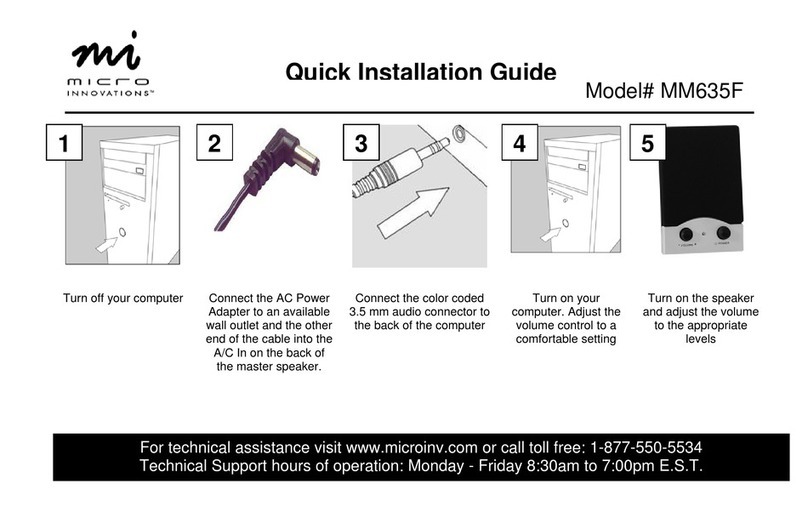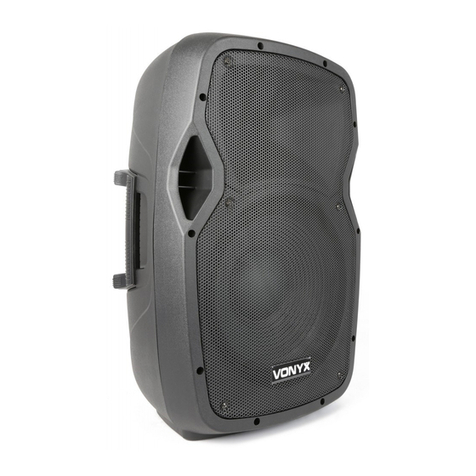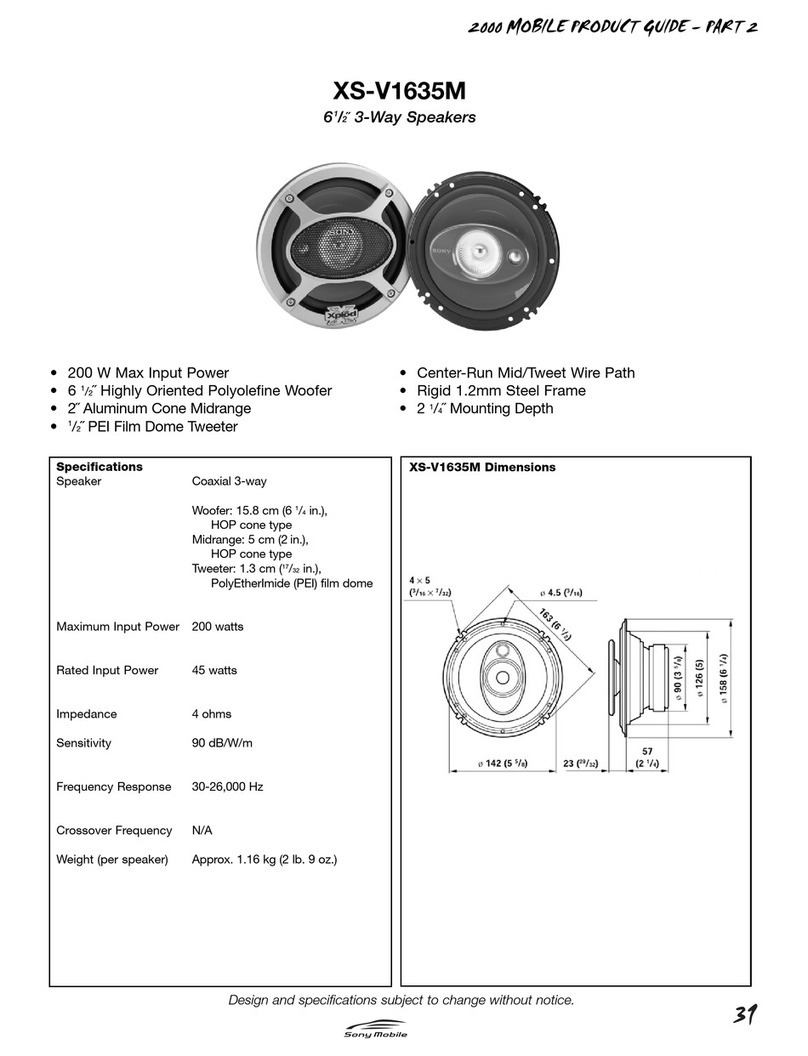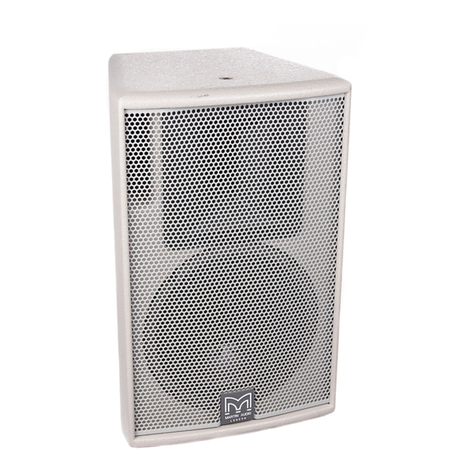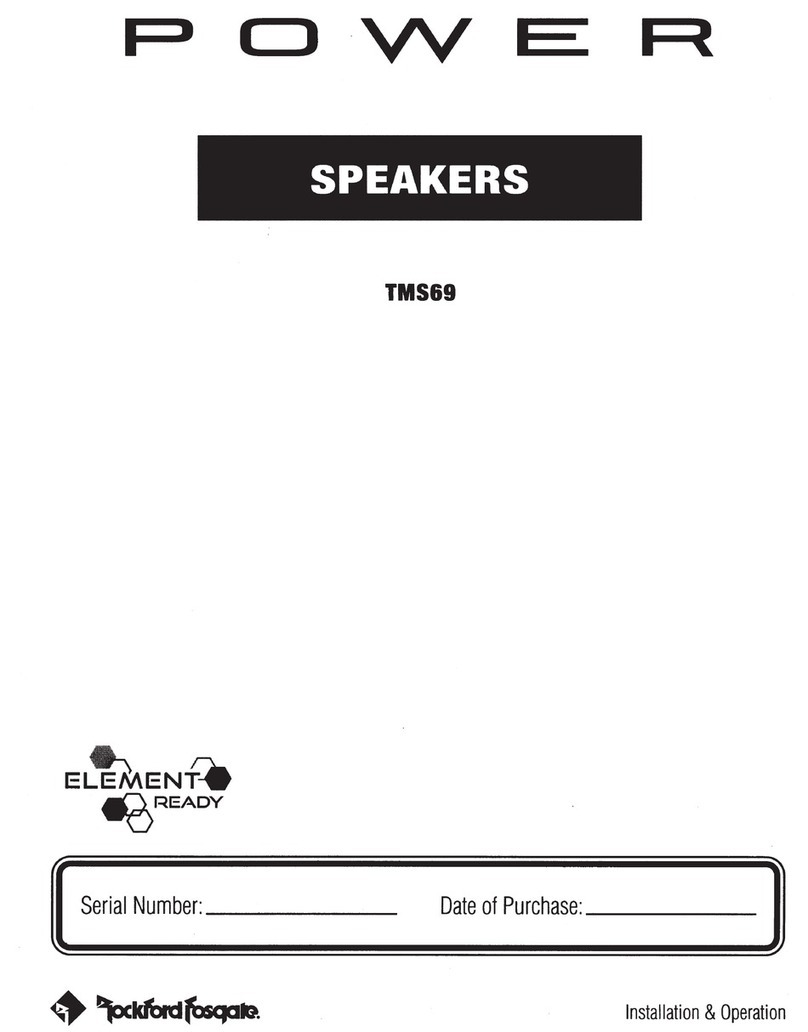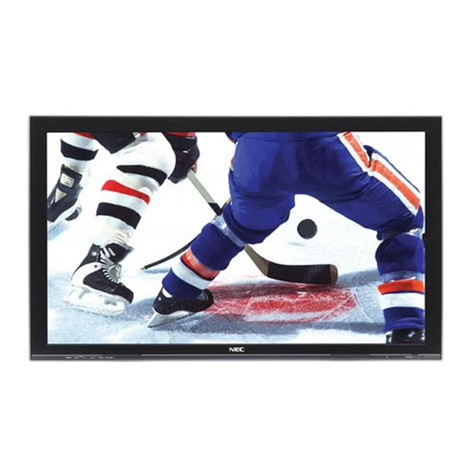EAW QX Series User guide

Application Guide
Passive Point Source

Tel 800 992 5013 / +1 508 234 6158
|
www.eaw.com 2
Passive Point Source Application Guide
Table of Contents
Using the Loudspeaker 3
Sound System Design 3
Using EAW Resolution™ 3
Passive Point Source Products - MKC Series 4
Passive Point Source Products - MKi Series 5
Passive Point Source Products - MKD Series 6
Passive Point Source Products - QX Series 7
Pairing with EAW Power Ampliers 9
Input Connections
11
Using UXA4410 Power Amplier 15
UXA4410 Amplier Output Connections 16
UXA4410 Load Matching 18
Going Online with UXA4410 18
UXA4410 Input Section 23
UXA4410 Output Section 24
Loading Greyboxes (EAW Speaker Preset Files) into UXA4410 25
Unify Processor Interfaces for UXA4410 Ampliers 29
Using UXA4401 & UXA4403 Power Ampliers 32
Installation of UXA4401 32
Installation of UXA4403 34
Conguring UXA4401 & UXA Amplier 35
Rigging: Mounting/Suspension 47
U-Brackets for QX Series 48
U-Brackets for MKD Series 50
Splay Brackets (MKD1000 Series only) 52
U-Brackets for MK Series 58
Plastic Pan & Tilt Bracket for MKC50/60 62
Metal Pan & Tilt Bracket for all MKC Models 67
U-Brackets for MKC Series & MKD526 72
MKC Series Small Ceiling Bracket 80
MKC Series Large Ceiling Bracket 86

Tel 800 992 5013 / +1 508 234 6158
|
www.eaw.com 3
Passive Point Source Application Guide
Using the Loudspeaker
Users will need to perform the following
general tasks to properly put a EAW passive
point source product into use. This manual
includes details for each task.
1. Design the system using the Resolution™ 2
Design & Control Software (see the program
Help File for further information about using
Resolution).
2. Design and install suspension points to
support the product(s)/rigging in intended
locations and aimed in the desired directions.
If ground-stacked, provide a level surface
capable of supporting the total weight of the
loudspeaker(s).
3. Connect the loudspeakers to a supported
EAW Processor and/or power amp.
4. Set-up and adjust overall system gain and
signal processing, as needed to maximize the
array's performance for the application.
5. Provide training to operate the
loudspeakers within their limits.
6. Provide regular inspection and
maintenance to maintain the integrity of
the installation and the performance of the
loudspeakers.
Sound System Design
See Resolution Help File for assistance in
properly designing line array systems.
Software
EAW Resolution 2 software is designed to
assist in SPL predictions, determine splay
angles, and calculate rigging limits for all line
array items.
Always ensure that your EAW Resolution
software is up-to-date.
For a complete list of recommended system
requirements, please refer to the Resolution
2 help le.
Using EAW Resolution™
EAW Resolution is the key to determining
the optimal loudspeaker conguration for
any application. Rooted in EAW’s proprietary
FChart modeling and calculation engine,
Resolution allows users to easily model any
venue and visualize a wide variety of sound
system designs to determine what particular
conguration is best suited to the venue.
Users simply need to dene the loudspeaker
position, allowable trim, minimum clearance,
and quantity available and use the Assistant
to determine the optimal loudspeaker
conguration for a given venue. In many
situations no further prediction work will be
necessary for optimal results. Users can also
adjust the results after running the Assistant
by manually adding/removing modules or
adjusting coverage and observing changes in
predicted results.
Please visit www.eaw.com to download the
latest version of Resolution. Instructional
videos can be viewed on education.eaw.com.

Tel 800 992 5013 / +1 508 234 6158
|
www.eaw.com 4
Passive Point Source Application Guide
Passive Point Source Products - MKC Series
►Available in four models, MKC50, MKC60, MKC80,
MKC120 (coaxial 5", 6", 8", and 12" respectively).
►MKC50 & MKC60 1 in Dome tweeter provides
superior dispersion, fidelity and output.
►MKC80 & MKC120 Patented CSA coaxial horn
provides superior control, delity and output.
►MKC80 & MKC120 Integrated handle and pole
mount.
►MKC120 Integrated M10 mounting points.
►Inherent weather resistance for outdoor use when
used under cover.
►Available WP Models for long term outdoor
installations.
►Multitap transformer options provide solutions for
distributed and fill systems.
►MKC Series can be deployed in either vertical or
horizontal orientations.
MKC50 - No grill MKC80 - No grill
MKC60 - No grill

Tel 800 992 5013 / +1 508 234 6158
|
www.eaw.com 5
Passive Point Source Application Guide
Passive Point Source Products - MKi Series
INSIDE EAW TECHNOLOGIES
Coverage
options
with specic
beamwidth
matched
crossovers
Rotatable
horns
Common
dimensions
between MK2300
and MK5300 series
Multiple
mounting
points for
exible
mounting
options
MK5326i ►120° x 60°
MK5364i ►60° x 45°
MK5366i ►60° x 60°
MK5394i ►90° x 45°
MK5396i ►90° x 60°
MK5399i ►90° x 90°
User rotatable horns let contractors
mount the enclosures vertically or
horizontally and still keep the desired
coverage pattern.
45°
90°
45°
90°
45°
90°
45°
90°
MK2326i ►120° x 60°
MK2364i ►60° x 45°
MK2366i ►60° x 60°
MK2394i ►90° x 45°
MK2396i ►90° x 60°
MK2399i ►90° x 90°
MK8126i ►120° x 60° MK8196i ►90° x 60°

Tel 800 992 5013 / +1 508 234 6158
|
www.eaw.com 6
Passive Point Source Application Guide
Passive Point Source Products - MKD Series
Proven durable Baltic birch
construction. Robust WP
option & custom colors
High power
compression
drivers to
handle lower
octaves to
manage
crossover
Spaced woofers for LF
pattern control
Large format
rotatable horn for
extended pattern
control
Compact
shape with
curved
front for
concealed
install
HP woofers
for maximum
performance
MKD1000 - No Grill

Tel 800 992 5013 / +1 508 234 6158
|
www.eaw.com 7
Passive Point Source Application Guide
Passive Point Source Products - QX Series
QX326 ►120° x 60°
QX364 ►60° x 45°
QX366 ►60° x 60°
QX394 ►90° x 45°
QX396 ►90° x 60°
QX399 ►90° x 90°
QX544i ►45° x 45°
QX564i ►60° x 45°
QX566i ►60° x 60°
QX594i ►90° x 45°
QX596i ►90° x 60°
Spaced low
frequency
sources in
two planes for
broadband
pattern control
Large horn
for extended
pattern control
Large format
compression
driver for
precise
alignment with
woofers
Symmetrical
enclosure
design with
trapezoidal
angles for
exible array
deployment
INSIDE EAW TECHNOLOGIES
SIDE VIEW CROSS
28.0
[710]
28.0
[710]
15.9
[403]
40°
19.9
[505]
23.8
[605]
TOP/BOTTOM
16.6
[422]

Tel 800 992 5013 / +1 508 234 6158
|
www.eaw.com 8
Passive Point Source Application Guide
Increased Directivity & Performance for
every application in one solution
It's helpful to look at EAW point source
products as one solution. Meaning, where one
product may leave of, another can easily take
it's place and complete the task.
For instance, if QX series is specied but cost is
of concern, MKD series is a viable solution with
only a small sacrice in performance. Same
could be said when looking at MKD series to
MKi series. Though these are dierent series,
they compliment each other.
All have various matching horn patterns,
which enables coverage matching between
these products to remain seamless, with only a
drop in performance and clarity.
Below are some examples on how directivity
scales between each product line (1 octave,
400hz)
QX596i
MKD1096
MK5396i

Tel 800 992 5013 / +1 508 234 6158
|
www.eaw.com 9
Passive Point Source Application Guide
Pairing with EAW Power Ampliers
Below are the recommended congurations when using UXA amps with point source products
MKC120

Tel 800 992 5013 / +1 508 234 6158
|
www.eaw.com 10
Passive Point Source Application Guide
UXA4410 Front & Back Panel
UXA4401
UXA4403

Tel 800 992 5013 / +1 508 234 6158
|
www.eaw.com 11
Passive Point Source Application Guide
Input Connections -
Neutrik NL4, 2-pin barrier strip
INPUT SIGNAL
HPF
2-Way, Single-Amp (LF/HF)
AMP XVR
HF
LF
HPF
2-Way, Single-Amp (LF/HF)
AMP XVR
HF
LF
INPUT SIGNAL
MKC50 & MKC60
MK8100i*, MKD800*,
MKC80 & MKC120
*Labeling may vary with these products

Tel 800 992 5013 / +1 508 234 6158
|
www.eaw.com 12
Passive Point Source Application Guide
6-pin barrier strip
DSP
EQ
DELAY
HPF/LPF
OR
“EAW FOCUSING”
AMP
2-Way, Bi-Amp (LF, HF)
AMP
HF
LF
HPF
2-Way, Single-Amp (LF/HF)
AMP XVR
HF
LF
HPF High Pass Filter for crossover or Recommended High Pass
LPF Low Pass Filter for crossover
LF/MF/HF Low Frequency / Mid Frequency / High Frequency
AMP User Supplied Power Amplier –or– Integral Amplier
XVR Passive LPFs, HPFs, and EQ integral to the loudspeaker
EAW Focusing Digital Signal Processor capable of implementing EAW
WHITINSVILLE, MA USA S/N
PASSIVE
INPUT
LF/HF
CONNECT
JUMPERS
FOR PASSIVE
OPERATION
-- +-- +
-- +-- +-- +
BI-AMP INPUT
N/C
LF HF
DSP
EQ
DELAY
HPF/LPF
OR
“EAW FOCUSING”
AMP
2-Way, Bi-Amp (LF, HF)
AMP
HF
LF
HPF
2-Way, Single-Amp (LF/HF)
AMP XVR
HF
LF
MK2300i & MK5300i
WHITINSVILLE, MA USA S/N
PASSIVE
INPUT
LF/HF
CONNECT
JUMPERS
FOR PASSIVE
OPERATION
-- +-- +
-- +-- +-- +
BI-AMP INPUT
N/C
LF HF
MKD1000
INPUT SIGNAL
INPUT SIGNAL

Tel 800 992 5013 / +1 508 234 6158
|
www.eaw.com 13
Passive Point Source Application Guide
HPF High Pass Filter for crossover or Recommended High Pass
LPF Low Pass Filter for crossover
LF/MF/HF Low Frequency / Mid Frequency / High Frequency
AMP User Supplied Power Amplier –or– Integral Amplier
XVR Passive LPFs, HPFs, and EQ integral to the loudspeaker
EAW Focusing Digital Signal Processor capable of implementing EAW
MKD1500
WHITINSVILLE, MA USA S/N
PASSIVE
INPUT
LF/HF
CONNECT
JUMPERS
FOR PASSIVE
OPERATION
-- +-- +
-- +-- +-- +
BI-AMP INPUT
N/C
LF HF
MKD1200
INPUT SIGNAL
INPUT SIGNAL

Tel 800 992 5013 / +1 508 234 6158
|
www.eaw.com 14
Passive Point Source Application Guide
HPF High Pass Filter for crossover or Recommended High Pass
LPF Low Pass Filter for crossover
LF/MF/HF Low Frequency / Mid Frequency / High Frequency
AMP User Supplied Power Amplier –or– Integral Amplier
XVR Passive LPFs, HPFs, and EQ integral to the loudspeaker
EAW Focusing Digital Signal Processor capable of implementing EAW
WHITINSVILLE, MA USA S/N
PASSIVE
INPUT
LF/HF
CONNECT
JUMPERS
FOR PASSIVE
OPERATION
-- +-- +
-- +-- +-- +
BI-AMP INPUT
N/C
LF HF
QX300
QX500i
INPUT SIGNAL
INPUT SIGNAL
AMP
3-Way, Multi-Amp (LF, MF/HF) LF load = 2Ω
EAW
FOCUSING
LF
–
+
LF
–
+
MF/HF
–
+
AMP
2Ω
8Ω XVR
AMP
3-Way, Multi-Amp (LF, LF, MF/HF) LF load = 2X 4Ω
AMP
EAW
FOCUSING
LF
–
+
LF
–
+
MF/HF
–
+
AMP
4Ω
4Ω
8Ω XVR
AMP
3-Way, Multi-Amp (LF, MF/HF) LF load = 8Ω
EAW
FOCUSING
LF
–
+
LF
–
+
MF/HF
–
+
AMP
8Ω
8Ω XVR

Tel 800 992 5013 / +1 508 234 6158
|
www.eaw.com 15
Passive Point Source Application Guide
12 853 6 10 11 12
4 97
1. Input Signal Indicators– A set of ve indicators show “Sig”, “-12”, “0dBu”, “+6” and “+12” and
“Clip (mute)” for each of the DSP inputs “A” “B” “C” “D”. The signal present Indicators operate at
approximately –40 dBu. The Clip/mute Indicators warn the user of input overload and operate
at 1dB before clip. This indicator also shows a muted input.
2. Power Switch– Applies mains power to the device. If the device has entered Sleep mode, it
may be woken up again either from the EAW Resolution software application, or by switching
this switch o, then on again.
3. Menu Buttons– There are three buttons to determine which section of the device to view or
edit. The <OUTPUT> button displays pages of parameters associated with a particular output
channel. The <INPUT> button displays pages of parameters associated with a particular input
socket or input DSP channel. Pressing <INPUT> or <OUTPUT> buttons repeatedly will scroll
through the inputs/outputs of the device. After the last channel, navigation returns to the Home
screen. The <UTILITY> button displays pages of miscellaneous parameters not associated with
any particular channel. Whilst in Edit mode, one of these three buttons will be illuminated. They
are mutually exclusive – pressing one of the buttons will deselect any others that are active.
Pressing Utils will escape back to the Home screen.
4. Page Selection Buttons– When one of the buttons <INPUT>, <OUTPUT> or <UTILITY> is
illuminated, the up <P> and down <Q> arrows will also illuminate, informing the user that these
buttons may be used to scroll through the various pages of parameters that may be viewed and
edited. The <ENTER> button is used to conrm an operation. It will illuminate when the user
is being invited to press it. It will ash when warning the user that pressing this button will
activate an important function.
5. Graphical Display– This will show the Home screen; a useful overview of channel allocation.
On most pages the currently selected channel and parameter information is displayed on the
upper part of the screen and the parameter value on the lower part of the screen; this can also
optimize the viewing angle.
6. Status Indicators– The “OVERLAY” indicator indicator is not currently used. The <DANTE
AUDIO> indicator illuminates when one or more of the inputs is using a Dante source. The
“ONLINE” indicator has three states: O– the unit is oine and not connected to a computer or
network. Flashing– the unit is searching for an IP address; if the unit does not nd an IP address
the unit will assign itself an IP address automatically and the indicator will stop ashing. On– the
unit is online and connected with software. IP settings can be viewed or changed within the
Using UXA4410 Power Amplier

Tel 800 992 5013 / +1 508 234 6158
|
www.eaw.com 16
Passive Point Source Application Guide
<UTILITY> pages. The “AES3 IN” indicator illuminates when one or more of the inputs is using
an AES3 source.
7. Parameter Encoders– Two velocity sensitive parameter encoders are used to adjust
parameters shown on the display. Up to three parameters at a time are displayed on the screen.
The parameter name is shown above the parameter value in each of the three screen sections.
Use SELECT to highlight the parameter, then ADJUST to change it.
8. Bridge Indicator– This will illuminate when the channel pair is in Bridge mode. The controls
for the left channel of the pair will determine the settings. See Bridge Mode
9. Mute Buttons– DSP output mute status is indicated and controlled by an illuminated button
for each channel. These ash when the entire unit is muted from the AUXA port or from EAW
Resolution software Mute-All, or if this channel has been muted by the protection systems.
10. Amplier Indicator– This indicates when the amplier protection systems are reducing the
gain to keep the parameters of the amplier within specication, or when that the channel is
clipping.
11. Driver Indicator– This indicates the output limiter is engaged.
12. Limiter Indicators– The output indicators shows the status of the limiter and output level.
The level indicated is that before the limiter, referenced to the limiter threshold. The <SIG>
indicator shows when a signal is present on the output. The second indicator <-6dB> shows that
the signal has reached 6dB below the limiter threshold. The third <LIMIT> indicator indicates
that the threshold of that output channel has been reached.
UXA4410 Amplier Output Connections
Note : The UXA4410 amplier can produce high voltages at their outputs. Always use genuine
Neutrik NL4 connectors. Un-bridged outputs must use Class 2 or class 3 wiring. Bridged channel
pairs must use Class 3 wiring. Custom wiring must only be performed by qualied personnel.
The UXA4410 amplier is tted with one NL4 connector per amplier channel.. The appropriate
conductor terminations are shown below and on the rear panel of the unit.

Tel 800 992 5013 / +1 508 234 6158
|
www.eaw.com 17
Passive Point Source Application Guide
Additionally, the channel 2 output is duplicated on the NL4 connector for amplier channel 1 for
Bi-Amp wiring. Similarly, the channel 4 output is duplicated on the NL4 connector for amplier
channel 3. This can be useful for making a connection to two loudspeakers with one 4-core
cable (i.e. Bi-Amp).
On the UXA4810 model, all outputs are Bi-Amp; each NL4 connector carries two amplier
outputs – Channels 1&2, Channels 3&4, Channels 5&6 and Channels 7&8.
In addition, the channel 1 or channel 3 connector (all the NL4 connectors on the UXA4810
model) can also be used if the pair of amplier channels is being operated in bridged mode.
More than one speaker can be connected to each channel provided the total impedance per
channel is not less than 2 ohms. In bridged mode the minimum total impedance should not be
less than 4 ohms.

Tel 800 992 5013 / +1 508 234 6158
|
www.eaw.com 18
Passive Point Source Application Guide
UXA4410 Load Matching
Each output of the device can be optimized to drive either a low impedance load (e.g. 2, 4 or
8 Ohms), or a Constant Voltage (C.V.) Using the Load parameter in the Output menu. There are
several C.V. settings (25V, 70V and 100V Line) which determine the maximum RMS voltage that
the amplier will produce. Select the one which is appropriate for the installation. A number of
low impedance settings (depending on the model) are also available. Although it is not critical
that this setting matches the impedance of the connected load, this will maximize the power
that is available for the load.
Going Online with UXA4410
Before going online, assure the computer being used is connected to the same Ethernet
network as the UX/UXA units. Two network cables will need to be connected to the processors/
ampliers for Control and DSP (one to the ETHNET port, the other to one of the DANTE ports).
NOTE: If processors/ampliers are on a DANTE Network consisting of more than 2 multicast
ows, communication issues may occur. As such, the UX/UXA products are only supported on
DANTE networks with 2 or less multicast ows. Also important, is though these products may
receive DANTE input signal, they do not support DANTE output (i.e. cannot be used as an on-
ramp).
When rst opening Resolution, start by switching to Network Conguration View.

Tel 800 992 5013 / +1 508 234 6158
|
www.eaw.com 19
Passive Point Source Application Guide
To add a processor or amplier to the system, click on the “+” symbol next to Processors &
Ampliers in the Project Explorer window.
Upon being prompted, choose a name and a product from the devices available. Click “OK”
once complete.

Tel 800 992 5013 / +1 508 234 6158
|
www.eaw.com 20
Passive Point Source Application Guide
The selected device will now be loaded into the system. In this case, as oine.
To connect the processor or amplier to the system, start by clicking Network > Connect.
This manual suits for next models
30
Table of contents
Other EAW Speakers manuals
